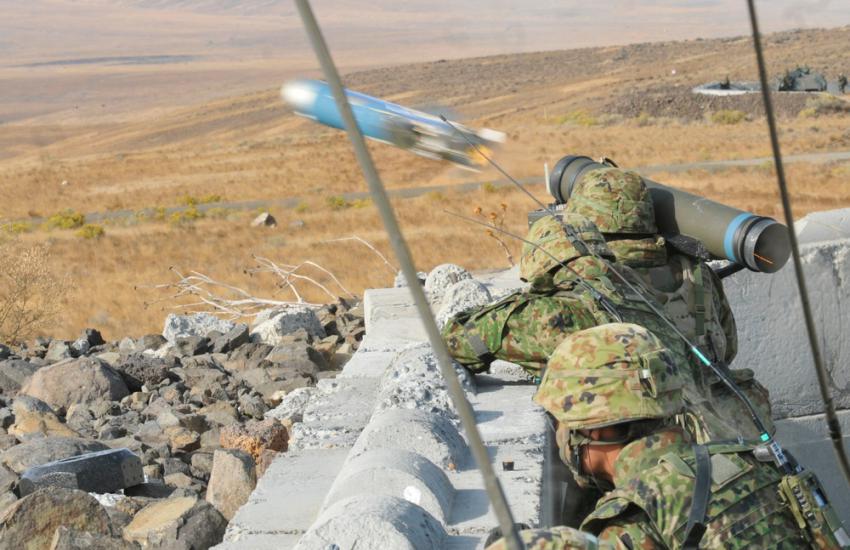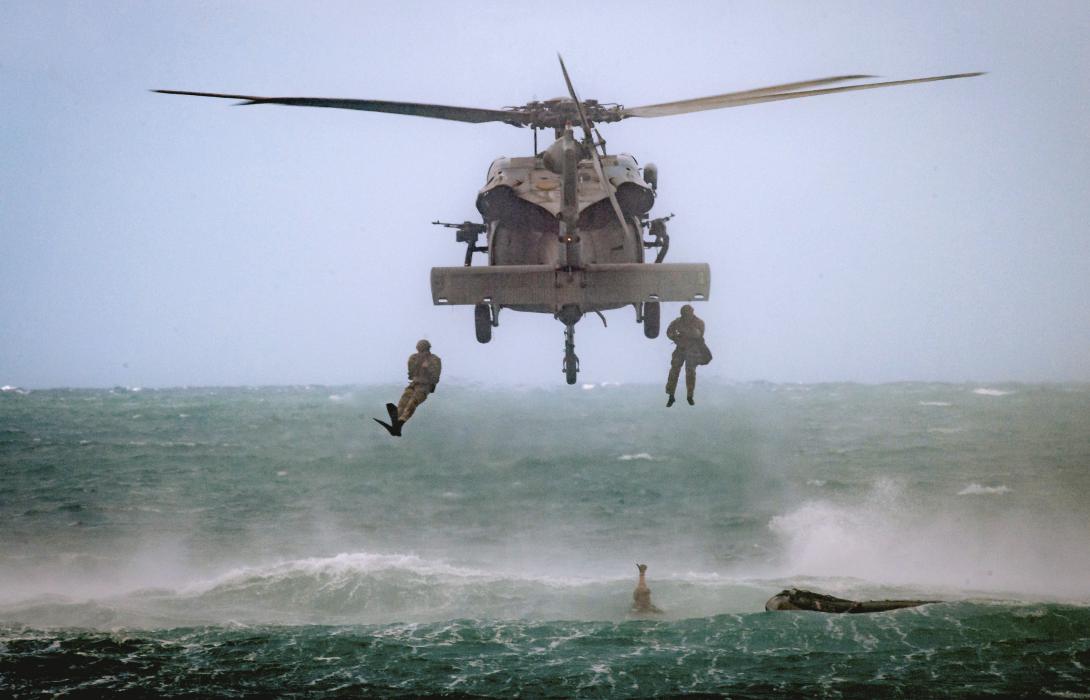Army DEVCOM Strengthens Indo-Pacific Partnerships
The U.S. Army Combat Capabilities Development Command (DEVCOM) aims to rapidly deliver science and technology solutions to warfighters in part by strengthening relationships with countries in the Indo-Pacific region.
DEVCOM provides the Army with an organic research and development capability and includes more than 13,000 soldiers, civilian employees and direct contractors, including more than 10,000 engineers and scientists. DEVCOM is a major subordinate command of the Army Futures Command, which assesses and integrates the future operational environment, emerging threats, and technologies to develop and deliver concepts, requirements, future force designs and the delivery of modernization solutions.
It is the Army’s largest technology developer and seeks to create, integrate and deliver technology-enabled solutions to soldiers as rapidly as possible. But because the United States isn’t the only home for innovation, the command expands the service’s science and technology efforts into international waters, explained Col. Michael Baker, who directs the DEVCOM-Pacific, one of three regional outreach organizations within the command.
“I view it as extending the science and technology enterprise into the international space. The U.S. doesn’t have a monopoly on good ideas and good research and innovation. In fact, by certain metrics, most of it is not in the U.S.,” he said. “Most of it is in the international space, so from a DEVCOM perspective, there’s motivation to be forward and present and engaging and effectively extending the enterprise into these spaces so that we can take advantage of the world-class research, world-class innovation.”
He cited India as one example. “We’re really working to improve our ability to engage there. The capability there and the opportunity for partnership is growing. We’re trying to expand our presence there,” he reported. “We have one person there and have for a few years now.”
The service has connected with universities in India and elsewhere in the region and is explicitly trying to improve its ability to engage with industry. The Army, for example, recently conducted a global technology search via its xTechSearch competition.
Col. Baker noted DEVCOM-Pacific is expanding its efforts in South Korea as well. “Without getting into details, we have refactored the organization a little bit to emphasize international technology engagement in Korea. Korea has been named as one of the most innovative countries in the world, and we see lots of opportunities.”
DEVCOM-Pacific’s efforts have paid off with the discovery of a new neuromorphic processor. “There was a foreign competitive test with a company that has designed a neuromorphic processor, which is basically a high-efficient neural network, artificial intelligence neural network processor. They have a partnership with a company here in Hawaii that we just visited,” he reported. “The neuromorphic processor has huge, huge potential, and it’s a great example of the kind of thing we can find out there.”
That potential includes improving networking capabilities. “From the network perspective, this thing’s going to help me do computation at the edge, help reduce the data. Instead of having to send the entire video file, this thing’s going to help send key component pieces of it or information about it,” Col. Baker said.
He indicated that with the neuromorphic processor, the Army will no longer need “a whole server center from Google to do even language recognition,” for example. “Now, more of that’s going to go inside your handheld devices, inside your cellphone and be more and more powerful in a way that used to require cloud. Now you can do it in a handheld and without huge power requirements, which is really powerful,” he asserted. “It helps in the data sense. It helps with sensing. It helps anywhere you can imagine trying to do computation or helping to understand the tsunami of data.”
The DEVCOM-Pacific director emphasized the importance of development operations, or DevOps, which combines software development and information technology operations to reduce the time needed to create new software. Col. Baker pointed out that DevOps is more useful for software than hardware. “If I’m trying to build a hypersonic weapon, the idea of DevOps is a little more challenging. Getting a minimally viable product in soldiers’ hands to get feedback is harder there than it is for my other favorite example, which is providing analytic tools to analysts.”
Automation and artificial intelligence are key tools for data analysts, and Col. Baker credited the Hawaii Pacific Innovation Campus, or Hi-PIC, as serving as an innovation pipeline for Army Pacific Command (USARPAC) and helping the command overcome challenges. “One big challenge there is getting the ability to have the analyst help train the artificial intelligence. We kind of have to predefine the artificial intelligence network in a way that’s hard to update and then validate again.”
Col. Baker said the 25th Infantry Division “Lightning Lab” also serves as an Army innovation hub in the region. “We’re setting up the battlespace visualization initiative, BVI. It’s a Soldier Center system that we’re looking at installing at Camp Humphreys that will then help the Soldier Center improve that product to use for visualization and training, for sand tabling and stuff like that,” the colonel offered.

U.S. Army Combat Capabilities Development Command at a Glance:
DEVCOM Analysis Center
DEVCOM Armaments Center
DEVCOM Army Research Laboratory
DEVCOM Aviation & Missile Center
DEVCOM Chemical Biological Center
DEVCOM C5ISR Center
DEVCOM Ground Vehicle Systems Center
DEVCOM Soldier Center
DEVCOM–Americas
DEVCOM–Atlantic
DEVCOM–Pacific
Col. Baker noted DEVCOM-Pacific is expanding its efforts in South Korea as well. “Without getting into details, we have refactored the organization a little bit to emphasize international technology engagement in Korea. Korea has been named as one of the most innovative countries in the world, and we see lots of opportunities.”
DEVCOM-Pacific’s efforts have paid off with the discovery of a new neuromorphic processor. “There was a foreign competitive test with a company that has designed a neuromorphic processor, which is basically a high-efficient neural network, artificial intelligence neural network processor. They have a partnership with a company here in Hawaii that we just visited,” he reported. “The neuromorphic processor has huge, huge potential, and it’s a great example of the kind of thing we can find out there.”
That potential includes improving networking capabilities. “From the network perspective, this thing’s going to help me do computation at the edge, help reduce the data. Instead of having to send the entire video file, this thing’s going to help send key component pieces of it or information about it,” Col. Baker said.
He indicated that with the neuromorphic processor, the Army will no longer need “a whole server center from Google to do even language recognition,” for example. “Now, more of that’s going to go inside your handheld devices, inside your cellphone and be more and more powerful in a way that used to require cloud. Now you can do it in a handheld and without huge power requirements, which is really powerful,” he asserted. “It helps in the data sense. It helps with sensing. It helps anywhere you can imagine trying to do computation or helping to understand the tsunami of data.”
The DEVCOM-Pacific director emphasized the importance of development operations, or DevOps, which combines software development and information technology operations to reduce the time needed to create new software. Col. Baker pointed out that DevOps is more useful for software than hardware. “If I’m trying to build a hypersonic weapon, the idea of DevOps is a little more challenging. Getting a minimally viable product in soldiers’ hands to get feedback is harder there than it is for my other favorite example, which is providing analytic tools to analysts.”
Automation and artificial intelligence are key tools for data analysts, and Col. Baker credited the Hawaii Pacific Innovation Campus, or Hi-PIC, as serving as an innovation pipeline for Army Pacific Command (USARPAC) and helping the command overcome challenges. “One big challenge there is getting the ability to have the analyst help train the artificial intelligence. We kind of have to predefine the artificial intelligence network in a way that’s hard to update and then validate again.”
Col. Baker said the 25th Infantry Division “Lightning Lab” also serves as an Army innovation hub in the region. “We’re setting up the battlespace visualization initiative, BVI. It’s a Soldier Center system that we’re looking at installing at Camp Humphreys that will then help the Soldier Center improve that product to use for visualization and training, for sand tabling and stuff like that,” the colonel offered.





Comments